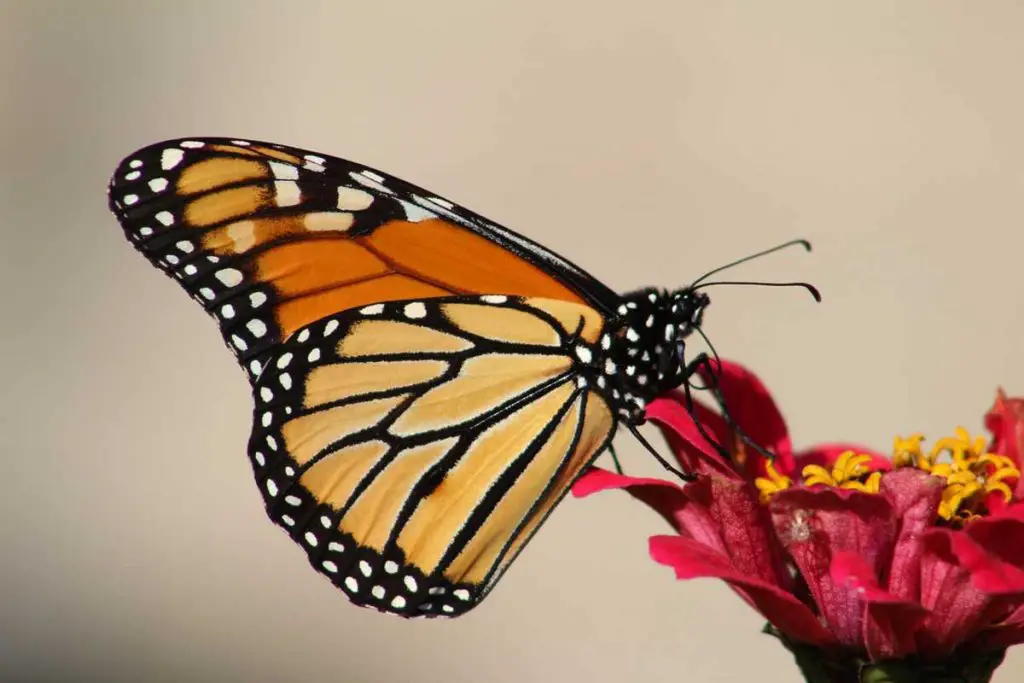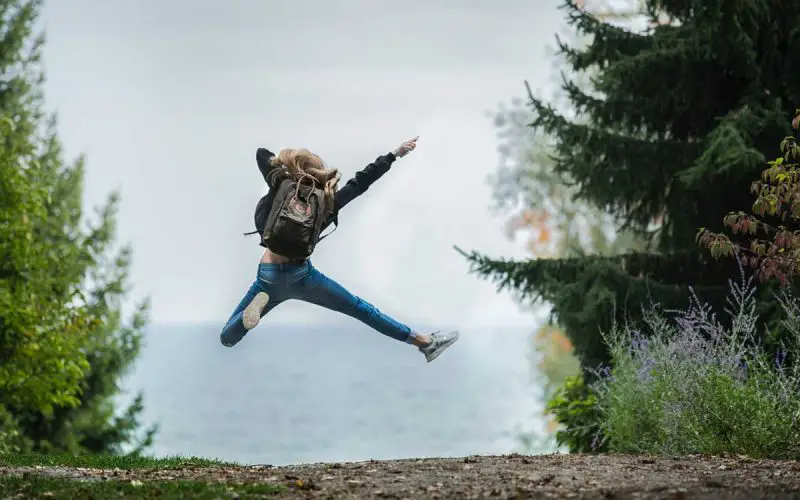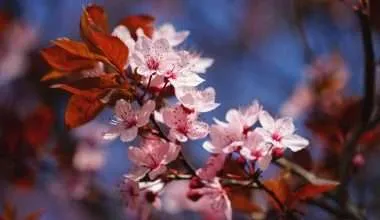Table of Contents Show
Navigation:
Human Rewilding: Methods and Practices.
- What is Human Rewilding?
- 12 ways to Rewild at home
- Human Rewilding skills you should learn
- Best ways to Rewild your garden
What is Rewilding?
In a nutshell, Rewilding is a progressive approach to achieving conservation.
It allows us to let nature take care of itself, enable the natural process to take shape on land and sea, as well as repair damages to the ecosystems and restore degraded landscapes.
Through rewilding, we can create a more unique and bio-diverse habitat for all species.
The ultimate goal of rewilding is to create an ecosystem which requires passive management. This is done by limiting human control of the ecosystem.
Long-term success in rewilding projects would have minimum human-based ecological management. A successful reintroduction of keystone species creates a self-sustainable and self-regulatory ecosystem with enhanced biodiversity.
Rewilding promotes regenerative land management techniques employed by horticulturalists and hunter-gatherers.
Human rewilding (skip to Human Rewilding) focuses on development of senses and fostering deep inter-personal relationships with members of other species, and of course, the natural world.
Principles of Rewilding
- Aiming to bring back wildlife
- Allow nature to heal itself
- Ensured Well-being in future
- Restoring Ecosystems
- Nature as an ally
- Stronger communities
- Inspires people
- Keystone species play a major role in rewilding
1. Aiming to bring back wildlife
The wildlife species has slowly declined over the past few decades. Even areas densely populated with wildlife, known as biological hotspots, are losing their species richness.
Some of those species have gone extinct.
Rewilding aims to restore these lost species by rebuilding lost habitats, by population enhancement and by reintroduction of key native species.
2. Allow nature to heal itself
Nature knows best when it comes to surviving harsh conditions. All we need to do is create the right conditions.
We can make sure of this by removing dikes and dams to free up rivers to provide more water, reducing intensive management of wildlife populations and by reintroducing species that have disappeared as a result of human actions.
Then we should let nature make way for itself.
3. Ensured Well-being in future
Once nature is healthy and thriving, we will be healthier too. Nature helps to provide water, food, and oxygen for us all.
Connecting with nature allows us to be more active, both mentally and physically. It creates a realization of nature’s importance.
Rewilding is built to reconnect our lost modern society with wild nature, by encouraging people to live and experience in these new rewarded landscapes.
There is no set endpoint when it comes to rewilding.
The objective is to support nature-driven processes which will bring about wilder nature. This requires time and space.
Rewilding is about moving up the scale of wildness, where every step up is seen as improvement or progress being made.
Both people and wildlife will benefit considerably if we go on to protect areas where wildlife needs to be brought back.
4. Restoring Ecosystems
Rewilding is very necessary to protect our ecosystems. We not only have to protect them but also restore them to their original form. Most ecosystems have degraded because of our actions.
The prospect of rewilding allows us to restore it back to the glory days. Self-sustaining ecosystems are more resilient towards climate change.
5. Nature as an ally
Rewilding links modern economics with ecology, where wild nature works as an aid to solving modern socio-economic issues. These ecosystems will then be more efficient in providing us with clean water, food, and air.
Nature also acts as sequesters of carbon to reduce global warming.
6. Stronger communities
Rewilding will help to boost different local businesses. Rewilding works in a way in which nature and tourism flourishes.
Locals can earn a good living that will be sufficient to provide food for their families. This will promote their development in society. Rewilding is important to rejuvenate rural and urban communities.
7. Inspires people

Experiencing the beauty and thrill of nature allows people to reconnect with the planet. It aims to improve the health and well-being and builds a sense of humanity and pride within people.
8. Keystone species play major roles in rewilding
A keystone species is one that has a disproportionately large effect on the natural environment irrelative to its abundance. This concept was established in 1969, by Robert T.Paine.
These species are said to play a key role in helping to maintain the structure of an ecological community. They control other organisms in the ecosystem and determine types and numbers of various other species in an ecological community.
Without having keystone species, the ecosystems may cease to exist altogether. It could trigger a trophic cascade!
Let me give you an example.
Beaver is known to be the most important element to a riverine ecosystem. It helps to build dams, which in turn create small micro-ecosystems that can be used as spawning beds for salmon and collect invertebrates.
These dams also help to create wetland ecosystems for plants, insects, and birds. Keystone species have a trickle-down effect on creating ecosystems that have a high potential to grow.
These are vital species that help to drive ecological processes. Wildlife is now making a comeback, but sadly the numbers are still low.
Fortunately, rewilding will help to accelerate the restoration and recovery of a number of keystone species.
Further Reading: 17 Examples of Keystone Species.
Examples of successful urban rewilding projects
Many countries have been trying to bring back nature into their cities through the process of urban rewilding. It is a good sign to see that many cities are implementing this strategy more and more.
Following countries have had successful urban rewilding projects:
Rewilding efforts are happening in a wide array of scales, from flourishing butterfly gardens of St. Louis to the revival of historical wetlands in the city of Harbin, China.
Let’s look into more detail at some great urban rewilding projects around the world
St. Louis, Missouri
Milkweed for Monarch: The St. Louis Butterfly Project is a project begun back in 2014 on Earth Day to create 50 gardens. These gardens have specific plant composition to act as a habitat for those beautiful monarch butterflies.
This is truly a great initiative created to foster co-existence of people with wildlife in an urban environment.

The common milkweed is a vital source of nutrition for the larvae of a caterpillar. These adults are feed by nectar from plants like butterfly weed, goldenrod, and New England aster. In return, butterflies pollinate and promote biodiversity.
There has been a rapid decline of butterfly population in past 2 decades. This is due to widespread chemicals being used in agriculture and habitat destruction. These gardens could put an end to both!
Luckily for the monarch butterflies, the target was exceeded with the St. Louis Butterfly Project.
The major of the city of St. Louis went on to plant 200 more gardens in celebration of the city’s 250th anniversary. The project was a major success, leading to further expansion of the project to involve local community groups and schools.
Collectively, they went on to plant 1,500 square foot area of the St. Louis Riverfront Butterfly Byway in 2016, which is considered to be an important habitat not only for butterflies but also pollinators.
P.S: A recommendation for the gardens in St. Louis Butterfly Project would be to employ integrated pest management programs.
Singapore
Right in the urban center of Singapore, lays 62 hectares of lush green vegetation with naturally meandering river right through the middle.
The renovation of Bishan-Ang Mo Kio Park began in 2009 as a part of Active, Beautiful and Clean (ABC) Waters Programme. They decided to convert the old concrete channel of the Kallang River back to its natural form.
The river creates a perfect habitat for many different species which provide recreation and education to urban dwellers in the city. Visitors visiting the park can spend time fishing in the pond, admiring lotus flowers, or take a stroll through the forestland part.
“In the past, we protected our water resources by keeping people away from them; now, we will bring people closer to water so that they will enjoy and cherish it more. Many of our rivers and canals are in or close to the residential heartlands. The waterways are therefore a natural focal point for water-based activities, community events, and other recreational options. By linking up our waterbodies and waterways, we will create new community spaces that are clean, pleasant, and bustling with life and activities. We will integrate our waterbodies with our parks and green spaces and turn Singapore into a City of Gardens and Water.”
Prime Minister Lee Hsien Loong
Wellington, New Zealand
The urban eco-sanctuary of Zealandia is a great manifestation of conservation efforts being carried out close to the city. An area of 225 acres was created to restore the original ecosystem of the Wellington valley’s forest to its original state.
The project was funded in 1998/99. Since its foundation, 18 species of native animals have been reintroduced into the area.
Harbin, China
The city of Harbin went on to resolve the difficulties they encountered with stormwater management in a truly unique way.
They designed a multi-functional stormwater park in an old wetland that was prone to seasonal flooding. Its purpose was to naturally collect, clean, and store rainwater.
The park is called The Qunli National Urban Wetland. It went onto receive an award of excellence from the American Society of Landscape Architects in 2012!
The city solved the problem of floods, simultaneously creating a great place for recreational activities. The UN observed 20 different bird species in the area that greeted the arrival of people with their singing.
Vancouver, Canada
Vancouver has a history of various environmental protection programs. It has more than 220 parks across the city in the neighboring areas, along with one of the most beautiful forests in the world, the Stanley Park Forest.
The forest is important heaven for biodiversity with two-century-old Douglas Firs that were protected from logging. It is a living legacy of being the most ecologically productive forests on the planet.
Similarly, a project has been commenced to turn Vancouver into the greenest city in the world by 2020.
The Greenest City Action Plan is based on the goal of creating easy access to nature in daily life.
This can be achieved through shared tree planting, creation of meadows for pollinators, and cooperation with different artists to incorporate more natural materials into their designs. This type of integration uses some of bio-mimicry principles.
Human Rewilding: Methods and Practices.
What is Human Rewilding?
Human Rewilding is intended to permanently establish wild human cultures beyond domestication. A form of human culture more in-harmony with nature than others.
Rewilding is a process to return to a wilder or a natural state, a way of reversing domestication which we’ve developed over the years.
The term was invented from green anarchism (focuses on environmental issues) and anarcho-primitivism (which favors returning to non-civilized way of living).
The argument centers on the fact that the majority of humans have become civilized and domesticated through agrarianism (shifting from hunting-gathering to agricultural economy) and sedentary social stratification.
Hence, there is dire need for humans to be more connected to nature.
Rewilding is a holistic approach to living. It’s a lifestyle one adopts, rather than learning specific knowledge, practices, or skills.
It tries to encourage us humans to consciously try and undo domestication of our lifestyles and return to native human cultures. Basically, return to a more primitive state of living which was practiced centuries ago.
12 ways to Rewild at home
Every form of change in lifestyle requires baby steps. Humans have been known to adapt very quickly to change but adapting gradually is definitely safer.
Plus, as you take these steps and gradually learn to live with it, you’ll most definitely know if human rewilding is for you or not for you.
You don’t need to leave everything and go into a jungle to adopt rewilding. Save yourself the effort and start rewilding from your home. We will show you 12 ways in which you can rewild your house.
1. Avoid Using Toxic Products
Cosmetic, hygiene, and cleaning products have synthetic chemicals that cause high levels of pollution and may even damage your health.
My first suggestion would be to try and avoid these synthetic beauty (cosmetic and hygiene) products as much as possible. As I said, some people find that difficult.
If you do plan on buying beauty products, try finding beauty products that are organic, cruelty-free and made of recyclable materials. You can make sure of this through the company’s sustainability profile.
When it comes to Eco-friendly cleaning products, the best thing I’d advise you is to make your own. Here’s of Eco-friendly cleaning products DIY kit you’ll need to make those products.
These are safe for the environment and surely better for your health as well. Chemical fumes from cleaning products have been known to cause a number of diseases I’ve discussed in the guide.
2. Plant a garden
Connect with nature of our planet by planting flowers, foods, and trees in your garden. You can grow anything you feel will bring you close to nature.
My suggestion would be to find plants and flowers native to your area and plant those in your garden.
3. Learn about wildlife
Try to learn and read about as much as you can on various animals that you may find fascinating.
Start by learning their habitats, characteristics, breeding habitats, diets. If they are endangered, learn why they’re endangered and ways to protect these animals from becoming extinct.
For starters; you can learn why Red Pandas are endangered.
4. Learn about native plants and animals in your area
Try to be aware of the native plants and animals that are found in your area. It is very easy and this way you can also educate others around you.
5. Pay close attention to changing seasons
With the change of seasons, comes a change of food. Try to eat seasonal fruits or vegetables and help out the local businesses by eating local food.
6. Try out herbal tea
Various healthy plant components protect us in different forms.
Try drinking organic herbal tea to gain these benefits and discover new flavors and combinations like pepper, licorice, lavender, ginger, cinnamon, and elderberry.
7. Bring home nature
Buy plants from nurseries and bring them home and decorate your house with the essence of nature. Care for these plants as much as you can.
Bring back rocks form grounds, or pick up and collect leaves and bring all of them back into your place.
Just clean them up to avoid bringing injurious materials into your home.
8. Exercise more
We shouldn’t be sitting all day, lying on the sofa scrolling through Facebook or watching Netflix, or sleeping on the bed, or sitting on a computer desk working or playing day and night.
We must add some physical activities into our lives that will make us more healthy and active.
Exercise helps to improve your mental and physical health.
9. Play with children
Age is just a number; start playing with kids, whether it’s your siblings, grandkids, or whatever. This activity will help to bring back the child inside of you.
10. Change your wardrobe
Not just your dressing, but hairstyle, or the way one wears makeup. Don’t follow the social norms and style trending that constantly change and come back once again.
Instead, choose the way you want to look as you like. Stop following unsustainable fashion trends!
11. Avoid synthetic clothing
If you are choosing to dress the way you want, stop use clothing made out of synthetic materials along with close that makes look stylish on you but are very uncomfortable.
Wear clothes made of organic raw materials, especially ones that can be recycled.
12. Disconnect to reconnect
Yes, everyone loves smartphones in 2020, and the way they have taken over our lives is astounding.
However, it is necessary for us to sometimes stop using so much of your smartphones and reconnect with the wild.
Human Rewilding skills you should learn
You get to learn a lot from human rewilding. It shows you how to thrive and survive in the wild without the use of modern tools or technology.
These are some human rewilding skills everyone should learn.
- Tool-making
- Starting a fire
- Trekking
- Trapping
- Hunting
- Cook in the wild
- Identifying medical herbs and plants

Tool-making
You must know how to make tools even before you know how to hunt or build a shelter.
It is crucial on what type of rock you choose to be used as the hand ax, hammer, or an arrowhead during your adventures? These things are essential for any successful journey into the wild.
Starting a fire
You can’t survive long in the wild if you don’t know how to start a fire.
Start by learning how to make a bow drill to generate friction and choose the right type of stones and tinder to spark and sustain a flame from scratch.
Do remember to put out those fires. It could otherwise result in wildfires, most of which are caused by humans.
Trekking
It is necessary to become a successful hunter in the wilderness, to be able to track animals by understanding their natural movements in the wild.
You will need to decipher various clues left behind them such as prints, calls, and droppings to track their whereabouts.
Trapping
A well designed and camouflaged trap is essential for trapping animals and helps you save time and energy in the process.
At times, setting up traps around your camp is very beneficial. It keeps dangerous animals from getting to you while you’re asleep.
Hunting
Learn how to make your slings, arrows, bows, and spears from the naturally available materials, and of course learn how to use them as well.
Please do not engage yourself in illegal wildlife poaching!
Cook in the wild
You must learn how to cook over an open fire using spits, roasting sticks, and buried pit methods.
This will allow you to make warm food out of very few resources, if need be.
Identifying medical herbs and plants
Ancient cultures have done onto identifying leaves, flowers, herbs, and roots that serve as a cure for digestion, fevers, aches, pains, and wounds.
Learning what type of plant and herb is used to treat what is essential for survival, especially if you develop symptoms.
This is sometimes known as herbal medicine. It’s actually much better when accounting for pharmaceutical industry pollution.
Best ways to Rewild your garden
- Make a wild corner in your garden
- No need to be tidy
- Grow a mixture of plants
- Avoid use of harmful chemicals
- Stop ditching weeds
Create a wild area
Leave piles of leaves, old woods, twigs, and grasses in a sheltered corner of your garden.
It will soon become a comfy home for many animals such as hedgehogs; in which they can hibernate in. It will also aim to provide a place for slugs and beetles to thrive in.
No need to be tidy
You can choose to trim hedges, grass, and branches up to a certain amount. Do remember to allow a bit of wildness here and there, it will help create a haven for other little critters.
You can even make use of insect house here!
Match and mix your plants
Match and mix the plants in your garden so that you may create wildlife as well as a garden design that is friendly to birds.
It’s not only attractive, but it will also have more success in attracting bees and other insects in a wider range of plants and flowers.
This is exactly what you need to improve biodiversity.
Avoid use of harmful chemicals
Ditch harmful pesticides, insecticides, and herbicides in favor of natural alternatives to create a more wildlife-friendly environment in your back garden.
Here are some common harmful agricultural chemicals used today.
Stop ditching weeds
Weeds are said to be a bad thing for your garden and most choose to remove it off their land as soon as possible. However, they can play an important role in carrying out rewilding.
Plants like stinging nettles provide shelter for butterflies and moths. Hence, sometimes it may be best to leave your weeds in the garden to experience a wider array of magnificent insects.






